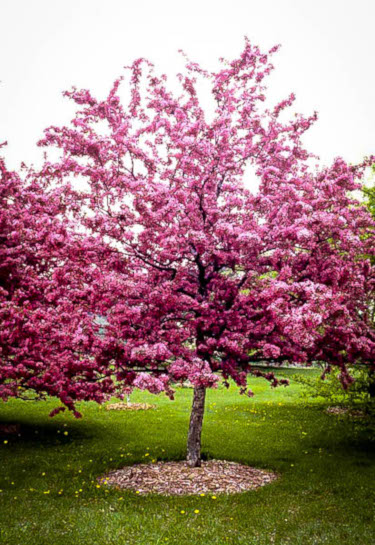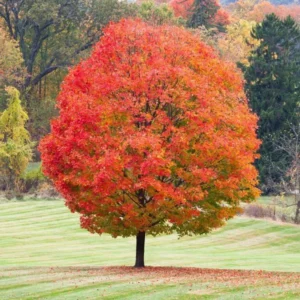Description
Flowering Crabapple Tree – 1 Yr Old Seedling
Overview
The Flowering Crabapple Tree (Malus spp.) is a stunning deciduous tree celebrated for its vibrant spring blossoms and year-round visual appeal. With its compact size and dazzling display of pink, red, or white flowers, it’s a favorite choice for landscaping and ornamental gardens. The small, colorful fruits that follow the blooms attract birds and add seasonal charm to any yard.

Native Range
Crabapple trees are widely cultivated across North America, with several species and hybrids originating from temperate regions. They are adaptable to various climates and soil types, making them a versatile ornamental addition to gardens.
Growth and Form
- Height: Grows 15–25 feet tall, making it ideal for small landscapes and urban planting.
- Spread: Develops a rounded crown with a spread of 10–20 feet.
- Growth Rate: Moderate growth rate, averaging 12–18 inches per year.
- Foliage: Green leaves turn yellow, orange, or red in fall, adding vibrant seasonal color.
- Flowers: Produces profuse pink, white, or red blossoms in spring, filling the air with a light fragrance.
- Fruit: Small, decorative crabapples that vary in color from yellow to red, persisting into winter.
Ecological Benefits
- Pollinator Attractor: The fragrant flowers are a vital nectar source for bees, butterflies, and other pollinators.
- Wildlife Habitat: The small fruits provide food for birds, including robins, cedar waxwings, and cardinals, during fall and winter.
- Erosion Control: Crabapple trees are excellent for stabilizing soil on slopes or embankments.
Hardiness and Climate Tolerance of the Crabapple Tree
- Hardiness Zones: 4–8, thriving in moderate climates with distinct seasons.
- Drought Tolerance: Moderate once established, though consistent watering ensures healthier growth.
- Soil Adaptability: Prefers well-drained loamy soil but tolerates clay, sandy, or slightly alkaline soils.
- Cold Hardiness: Excellent tolerance for freezing temperatures, ideal for northern climates.
Planting and Care of the Crabapple Tree
- Planting Location: Full sun (6–8 hours of sunlight) ensures abundant flowering and fruit production.
- Soil Preparation: Amend soil with organic matter for optimal growth and ensure proper drainage.
- Watering: Water young trees weekly; mature trees only need supplemental watering during dry spells.
- Pruning: Prune in late winter to shape the tree and remove dead or diseased branches.
- Fertilization: Use a balanced fertilizer in early spring to promote healthy foliage and blooms.
Potential Problems
- Apple Scab: A common fungal disease; plant resistant varieties or treat with fungicides if necessary.
- Fire Blight: Prune affected areas and avoid excessive nitrogen fertilization to prevent this bacterial disease.
- Pest Resistance: Relatively pest-resistant, though occasional aphids or caterpillars may appear.
Uses
- Ornamental Landscaping: Ideal for gardens, parks, and yards, providing seasonal interest with flowers, foliage, and fruit.
- Pollinator Gardens: A top choice for attracting bees and butterflies in spring.
- Wildlife Support: Fruits offer a natural food source for birds and small mammals.
- Urban Planting: Compact size and adaptability make it perfect for urban or suburban settings.






Reviews
There are no reviews yet.